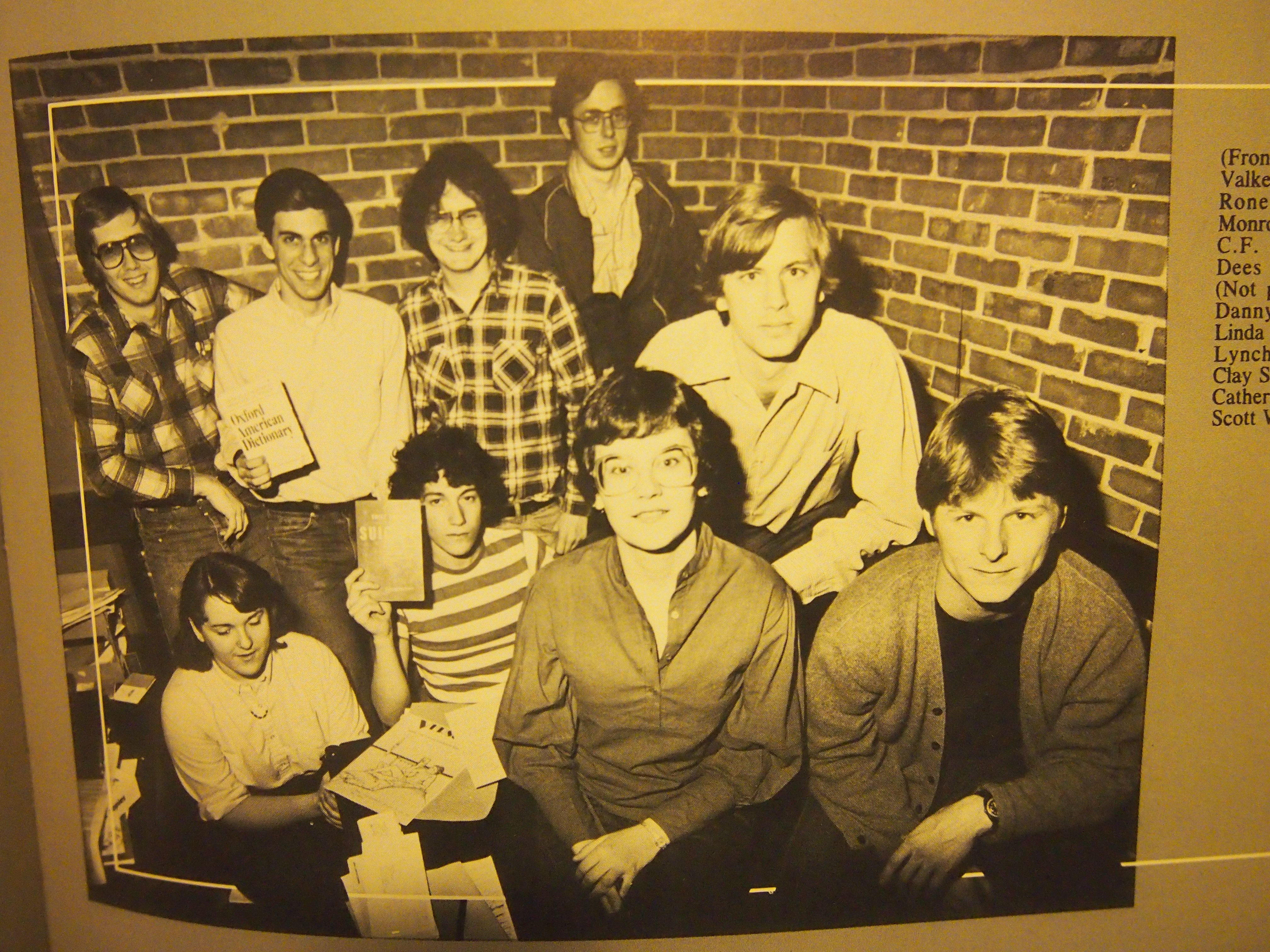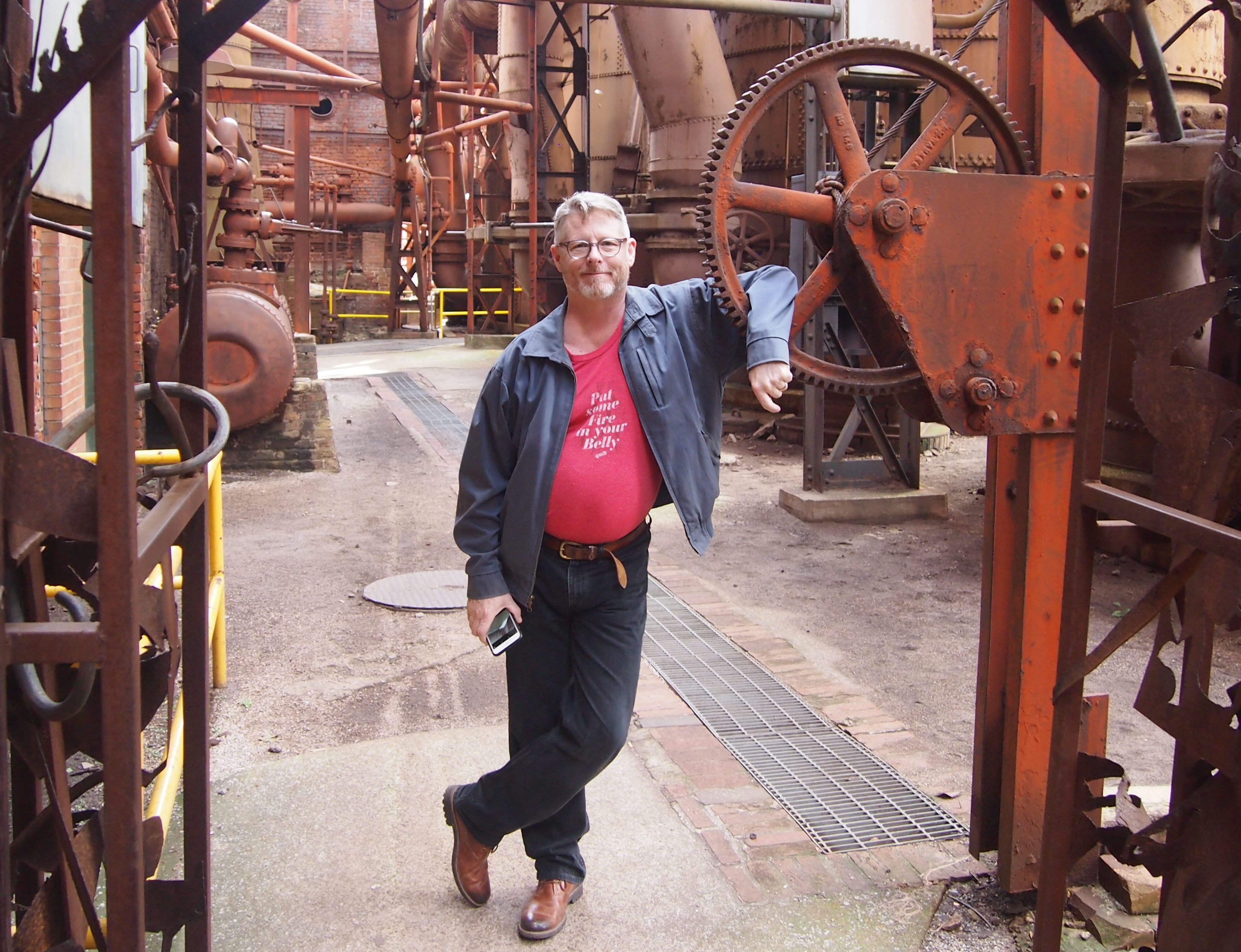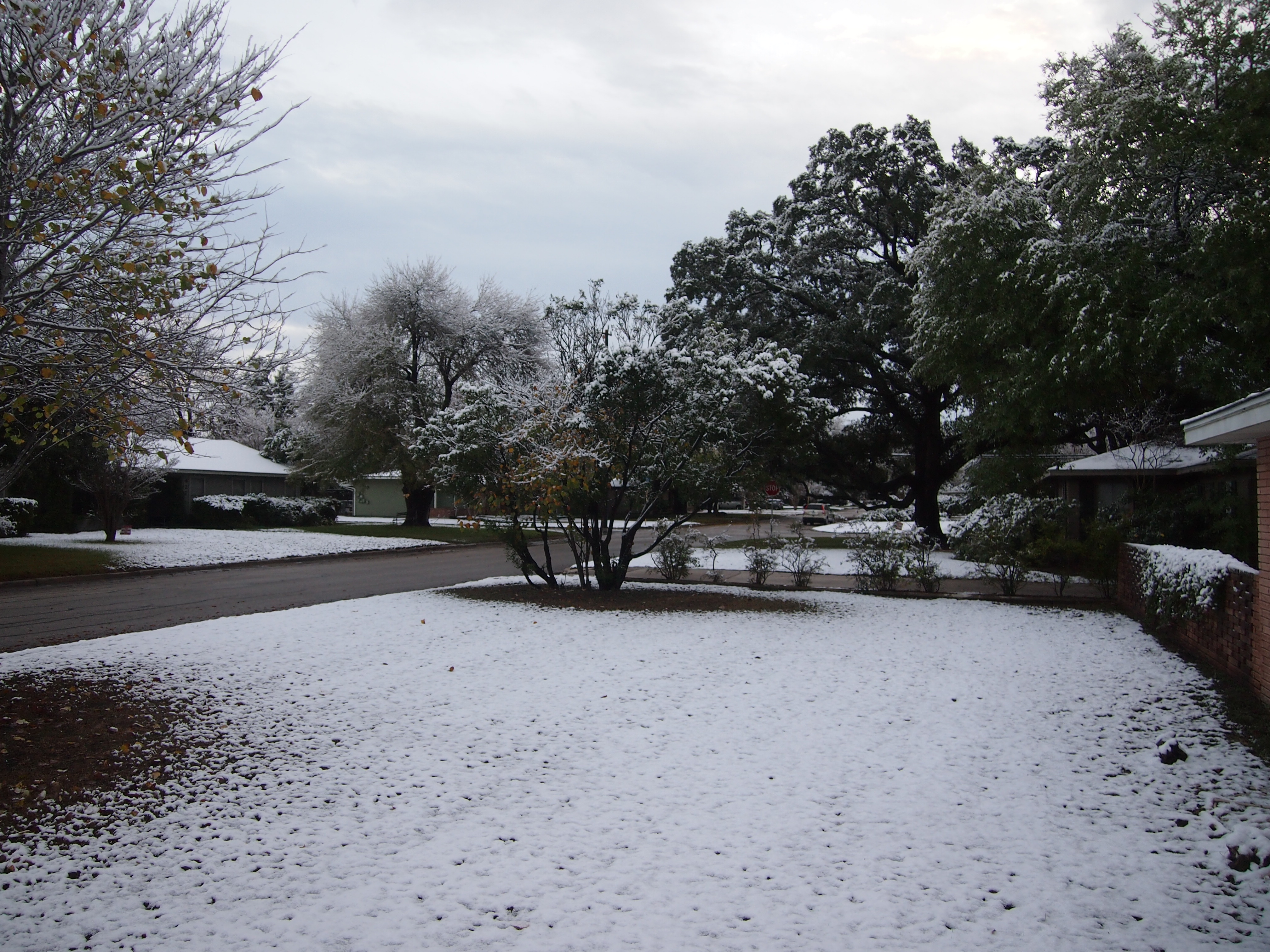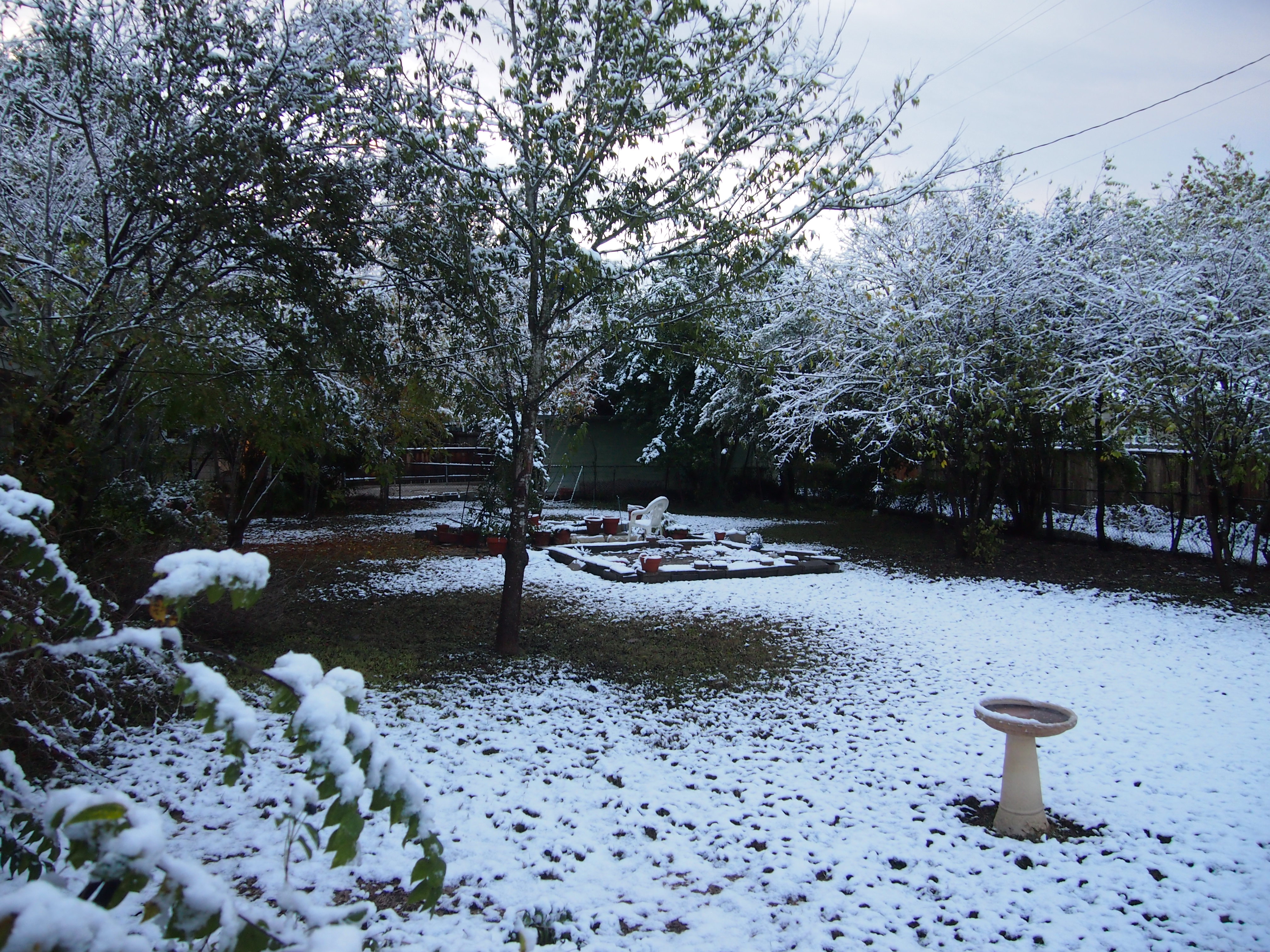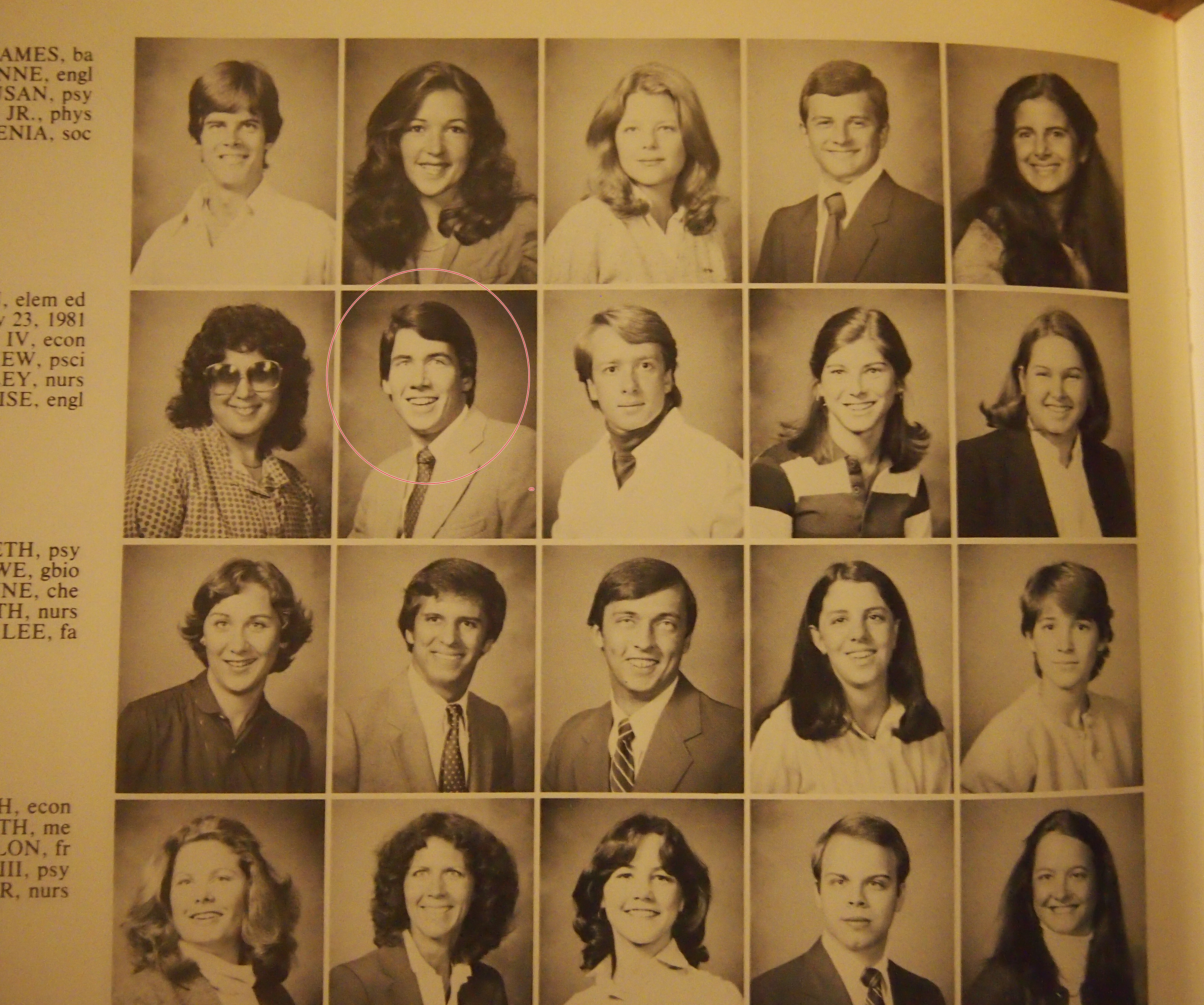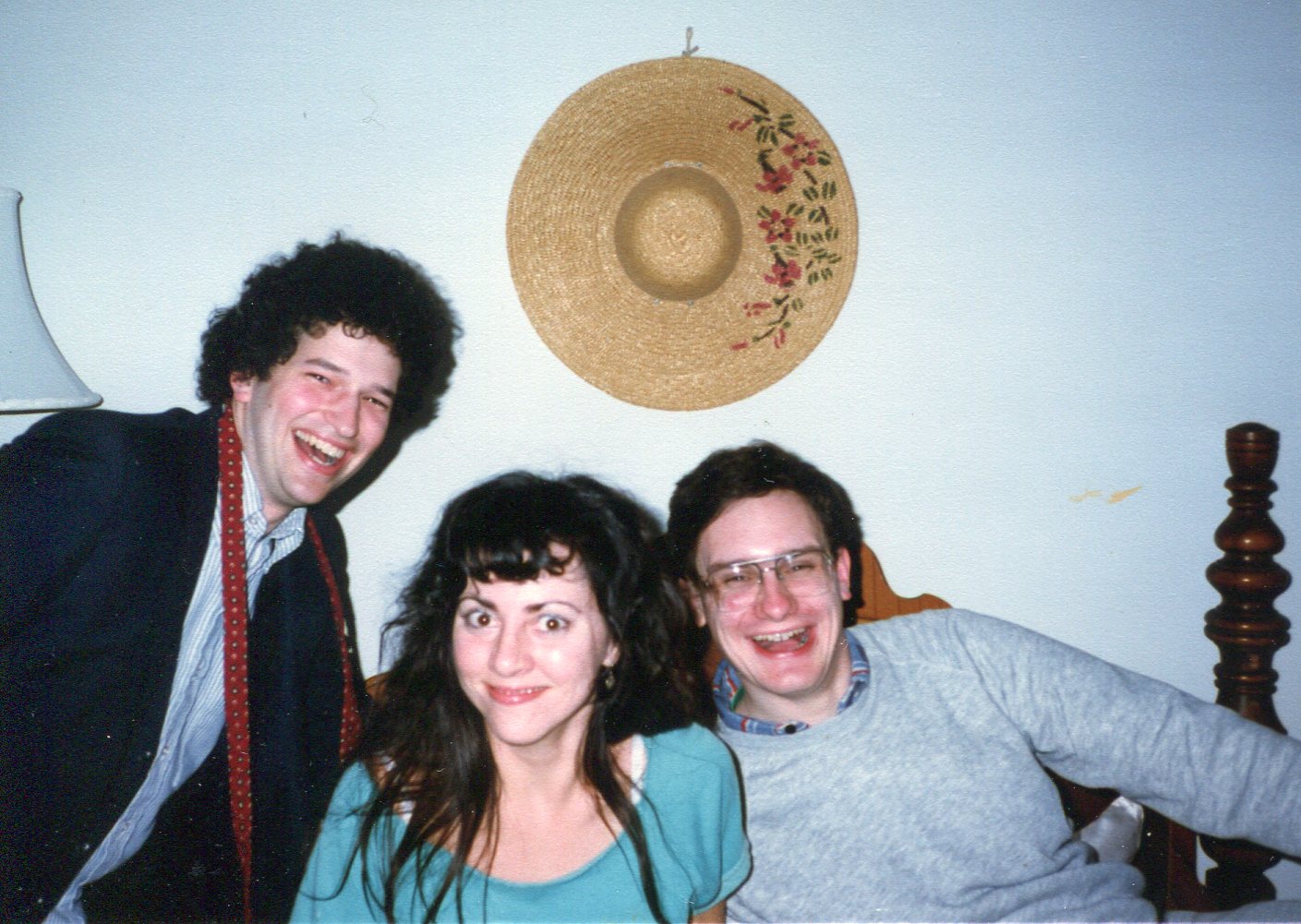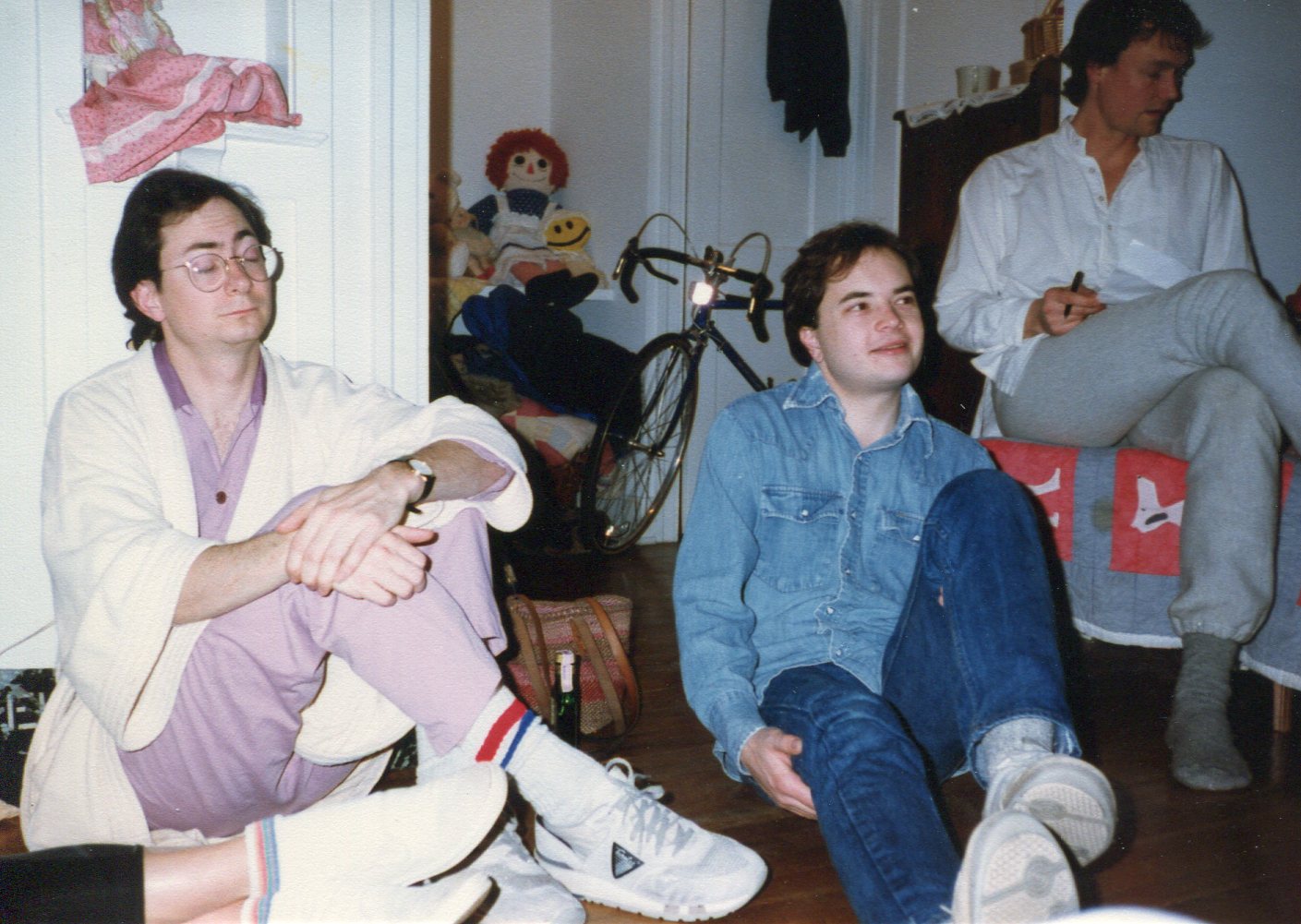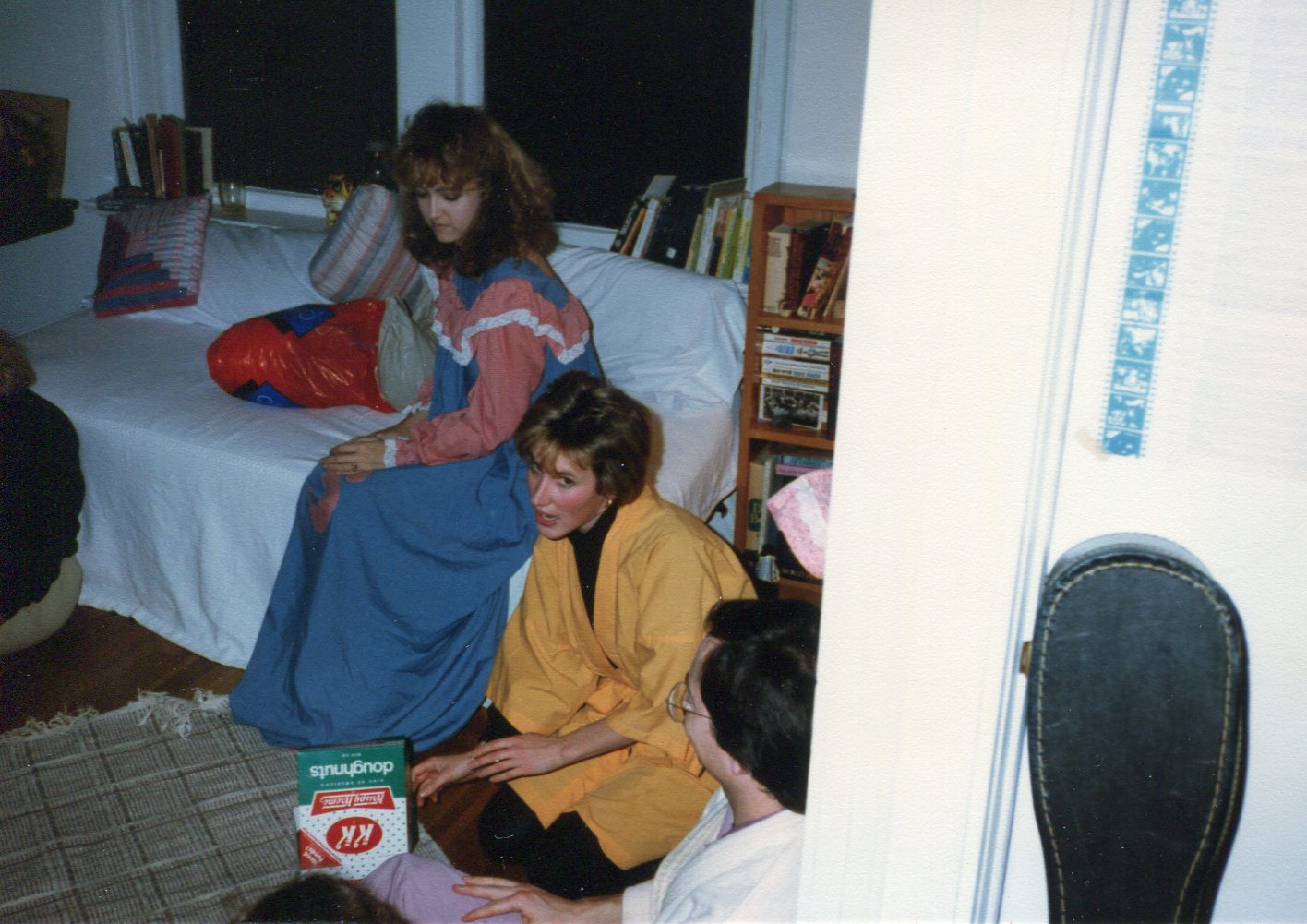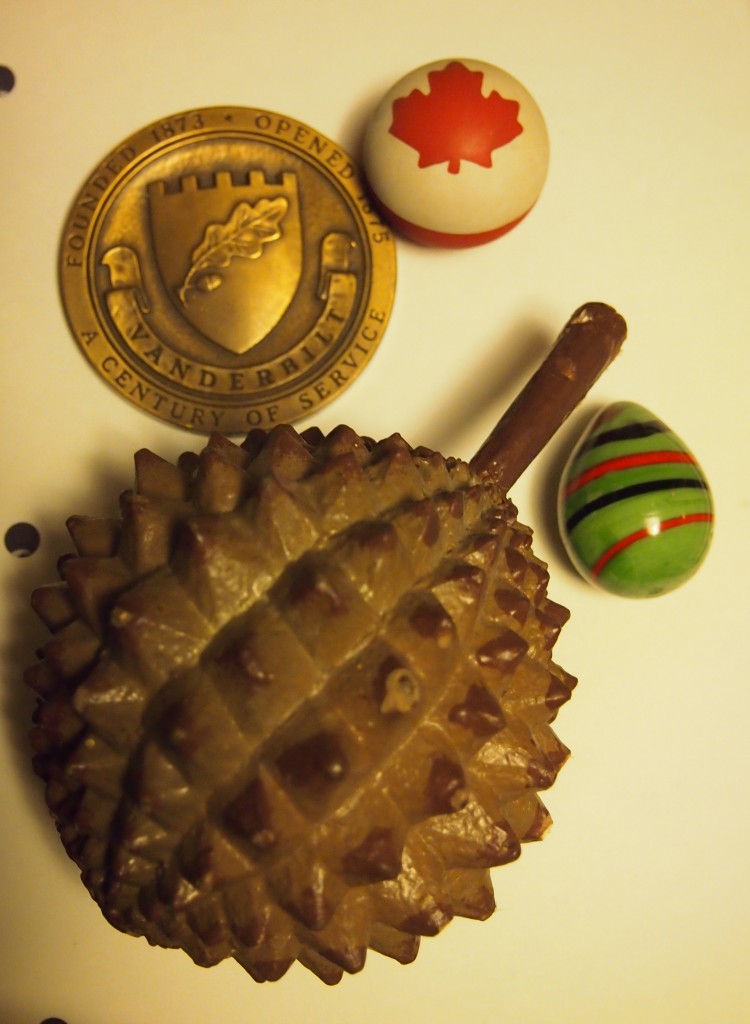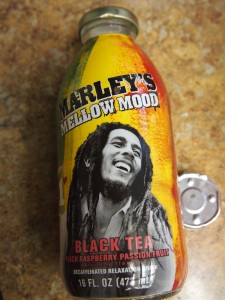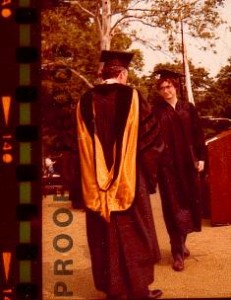Again I’m sad to report a passing. Mike Johnson, my friend for almost 35 years, has died in Nashville. Michael Owen Johnson, in full. He leaves behind his wife Betra, two stepchildren, father Ensign Johnson, older brother Lee, twin brother Steve, younger sister Susie, and many friends. Here’s Mike in 1987 at a wedding we both attended.
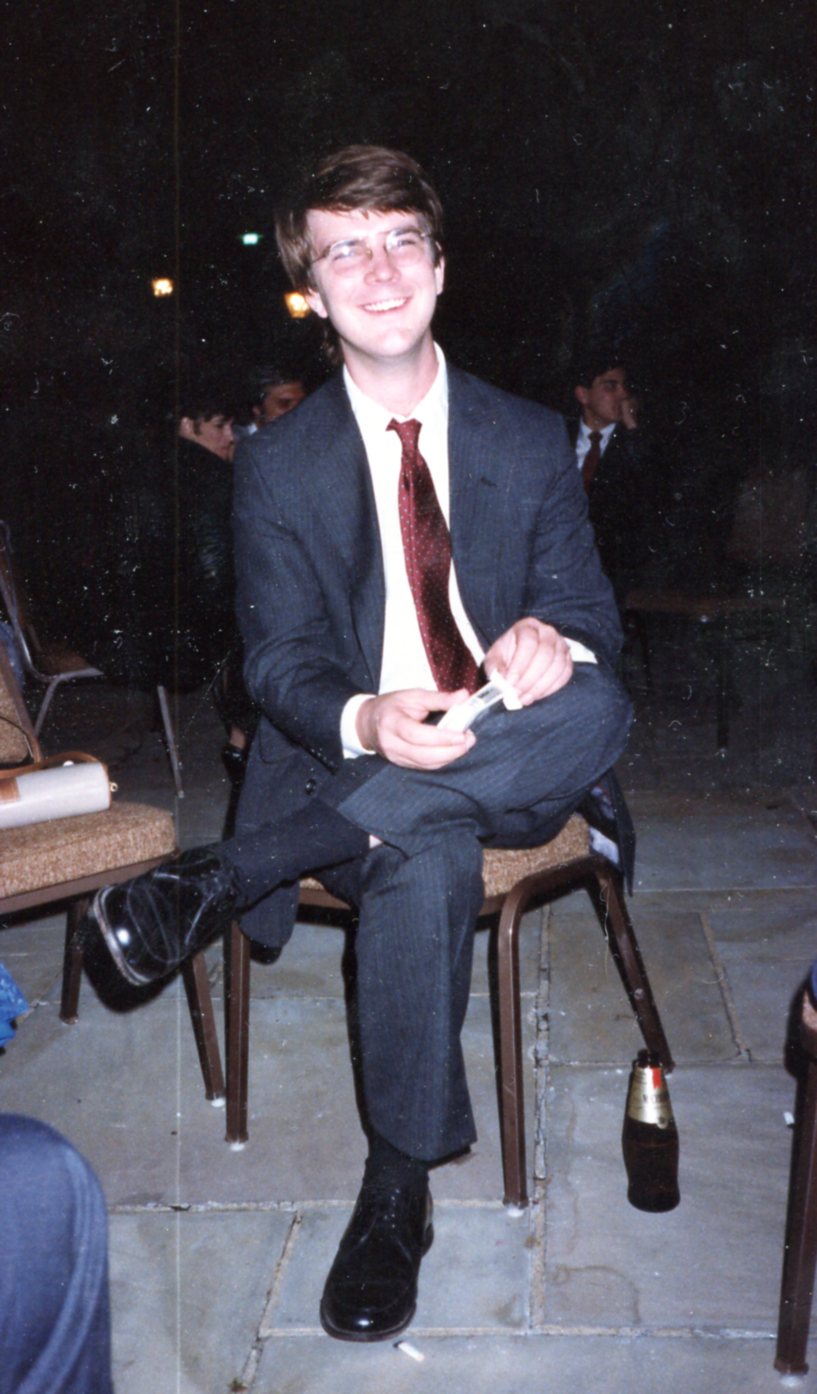 There’s something special about the camaraderie of young men, and I’m glad Mike and Dan and Steve and Rich and I shared that in the early 1980s, late in our respective college careers. A recalling of most of the things we did together wouldn’t be all that interesting to other people, so it’s enough to mention in passing the meals shared, music heard, movies seen, books and girls explored, parties attended and thrown, intoxicants enjoyed, and the late-night (and sometimes afternoon or evening) bull sessions rising from the friendship of bright, curious lads, of whom Mike was definitely one.
There’s something special about the camaraderie of young men, and I’m glad Mike and Dan and Steve and Rich and I shared that in the early 1980s, late in our respective college careers. A recalling of most of the things we did together wouldn’t be all that interesting to other people, so it’s enough to mention in passing the meals shared, music heard, movies seen, books and girls explored, parties attended and thrown, intoxicants enjoyed, and the late-night (and sometimes afternoon or evening) bull sessions rising from the friendship of bright, curious lads, of whom Mike was definitely one.
It was Mike’s engineering skills that enabled us to build, in the spring of 1982, an isolation tank in the house we rented, and keep it running through all of the next school year. He planned it and oversaw construction. It was no small undertaking: the thing was a wooden box with a hatch door on the side, and large enough to hold an adult. You floated inside, door shut, in the dark and quiet, buoyed by water saturated with Epsom salts held by a swimming pool liner affixed to the inside. It had ventilation and a heating system that had to be turned off when someone was in the tank (otherwise, Mike told us, there was the risk of being electrocuted by all the power the TVA could offer).
One time Mike was our cicerone in the only bit of non-commercial caving that I’ve ever done. In the summer of ’82 — that fine summer, and Mike was part of it — Mike and Steve and I went to rural Tennessee to an undeveloped cave whose name I’ve entirely forgotten, and we rambled around inside for most of the day, eating lunch under the earth, getting caked in mud, and making our muscles sore. I’m sure it wasn’t a technically difficult cave, but it was a thrill all the same. Here’s something I’ve never forgotten: always have three sources of light, Mike told us. For each of us in that cave ramble, that meant a helmet with an acetylene lamp; a flashlight; and a candle and matches.
By training and inclination, Mike was an electrical engineer. After finishing school, he worked for NASA for a few years, doing I couldn’t tell you what at the Marshall Space Flight Center in Huntsville, Ala. In early 1984, I visited him, and he showed me around the place, a thing that might not be possible now in our more paranoid times. That morning there was a Shuttle launch, and we went to a meeting room with a lot of other engineers to watch it on closed circuit TV. Off it went, and the engineers filed quietly out to their jobs. “They only would have reacted if something had gone wrong,” Mike said.
Though he clearly had a keen engineering mind, I have to add that Mike wasn’t stereotypically narrow. Most engineers probably aren’t, but whatever the truth of that notion, he had a wide array of interests: science, literature, politics, history, and much more I probably didn’t know about. He had a sometimes dry wit and leftist inclinations. We always had something to discuss.
After his stint at NASA, he returned to Nashville, where he’d grown up, determined to be his own boss. Or as he put it to me, “I don’t like having a boss.” And so he was an independent contractor for the rest of his life, with all the ups and downs that go with that — something I can appreciate these days. He acquired a house in the Sylvan Park neighborhood, a vintage property, and did a lot of the necessary renovation himself. While I still lived in Nashville, we hung out a fair amount. Once I went with him to visit a client of his: a refrigerator factory in Middle Tennessee, to see the parts and the guts that went into that everyday machine — something I’d never have seen otherwise.
Mike introduced me his old friend Wendy Harris around Thanksgiving 1982 (there’s that year again), who’s been a dear friend of mine ever since. In fact, once I heard about Mike’s death from Dan on Tuesday, I knew I had the difficult task of calling Wendy to tell her, since I didn’t think she’d heard. So I did. They went to Hillsboro High School in Nashville together, and in fact before I moved away from Nashville, I was friends with about a half-dozen other people Mike had gone to high school with, many of whom Wendy introduced me to. A guy like Mike has a lot of friends.
Late in life — I suppose about 10 years ago — he married the charming and intelligent Betra, a woman originally from Sumatra. I believe they met in Singapore, where she was working and he had been sent for a while by a client. I never heard the full details of their courtship; I don’t usually ask about that kind of thing, and Mike wasn’t talkative about it, but no matter. I visited them twice, and they were clearly happy together.
Unfortunately, Mike wasn’t much of a correspondent, so my occasional visits to Nashville over the last three decades were our main connection over those years. He offered me a place to stay during my visits a number of times, and sometimes I accepted. I sent him postcards now and then. He did get to meet Yuriko, and younger versions of my children; I’m glad about that. I saw him for the last time a few years ago, and despite his manifest health problems, we had a fine visit, talking of old times and more recent things, spending much of the time in the Johnson back yard, where Betra had cultivated a lovely garden.
He will be missed. RIP, Mike.
